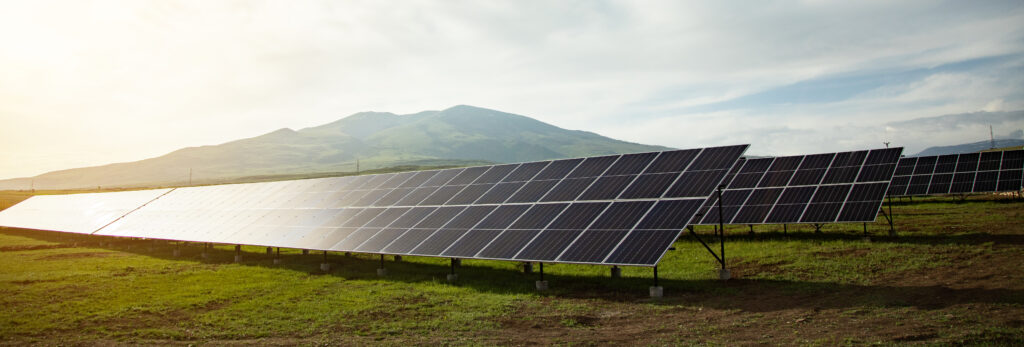Rural Energy for America Program Grant (REAP): Three Essential Steps for Navigating the Application

The Rural Energy for America Program (REAP) Grant is a vital initiative by the U.S. Department of Agriculture (USDA) aimed at promoting energy independence and energy efficiency in rural areas. By providing financial assistance to agricultural producers and rural small businesses, REAP helps implement renewable energy systems and energy efficiency improvements. If you’re considering applying for REAP funding, here are the essential things you need to know or have to ensure a successful application.
1. Understanding Eligibility Requirements for the REAP Grant
Before diving into the application process, it’s crucial to determine if you meet the eligibility criteria for REAP funding. The program is designed specifically for:
Agricultural Producers
- You must derive at least 50% of your gross income from agricultural operations.
- This includes a wide range of farming activities, from crop production to livestock management.
Rural Small Businesses
- Your business must be located in a rural area, defined as a location with a population of 50,000 residents or fewer.
- Additionally, your business must meet the Small Business Administration’s (SBA) size standards, which vary by industry.
Understanding these eligibility requirements is the first step in ensuring that your application is considered. If you’re unsure about your eligibility, it’s advisable to contact your State Rural Development Energy Coordinator for guidance.
2. Identifying Eligible Projects and Funding Options for REAP
Once you’ve established your eligibility, the next step is to identify which projects qualify for REAP funding. The program supports two main types of projects:
Renewable Energy Systems
These projects involve the installation of systems that generate energy from renewable sources. Examples include:
- Solar Panels: Harnessing sunlight to generate electricity.
- Wind Turbines: Utilizing wind energy to produce power.
- Biomass Systems: Converting organic materials into energy.
- Geothermal Systems: Using underground heat for energy production.
Energy Efficiency Improvements
- These projects focus on reducing energy consumption through various upgrades, such as:
- HVAC System Upgrades: Installing more efficient heating and cooling systems.
- Insulation Improvements: Enhancing building insulation to reduce energy loss.
- Lighting Upgrades: Switching to energy-efficient lighting solutions.
Funding Options
REAP offers several funding avenues:
- Grants: Cover up to 50% of total eligible project costs, with amounts ranging from $1,500 to $500,000.
- Guaranteed Loans: Provide financing for up to 75% of total eligible project costs.
- Combined Grant and Loan Guarantee: Offers a combination of both grants and loans, covering up to 75% of project costs.
Understanding these options will help you choose the best funding strategy for your project.
3. Navigating the Application Process for REAP
Applying for REAP funding requires careful preparation and attention to detail. Here’s a step-by-step guide to help you through the process:
Initial Contact
Start by reaching out to your State Rural Development Energy Coordinator. They can provide valuable insights and guidance tailored to your state’s specific requirements and deadlines.
Preparing Your Proposal
A comprehensive project proposal is crucial for a successful application. Your proposal should include:
- Project Description: Clearly outline what your project entails and its objectives.
- Estimated Energy Savings or Generation: Provide calculations or estimates demonstrating potential energy savings or production.
- Environmental Benefits: Highlight how your project will positively impact the environment.
- Cost-Benefit Analysis: Include a detailed financial analysis showing the project’s economic viability.
Securing Matching Funds
If you’re applying for a grant-only option, you’ll need to secure matching funds covering at least 50% of the project costs. This demonstrates your commitment and financial capability to complete the project.
Submission and Deadlines
Ensure that you submit your application by the specified deadline, typically September 30th each year. Late submissions are generally not accepted, so it’s important to plan accordingly.
Tiered Application Process
REAP uses a three-tiered application process based on project size:
- Tier 1: Projects costing up to $80,000.
- Tier 2: Projects costing between $80,000 and $200,000.
- Tier 3: Projects costing over $200,000.
Note: It’s crucial that you apply under the correct tier for your project size.
Americus Energy are Your REAP Experts
Applying for REAP funding can be a transformative opportunity for agricultural producers and rural small businesses looking to enhance their energy efficiency or adopt renewable energy solutions.
By understanding eligibility requirements, identifying suitable projects and funding options, and navigating the application process effectively, you can increase your chances of securing this valuable resource. With careful planning and preparation, REAP can help you achieve both economic savings and environmental benefits in your rural community.
Contact Americus Energy today to expedite your REAP grant.
